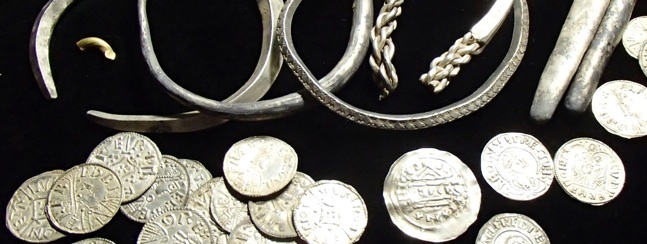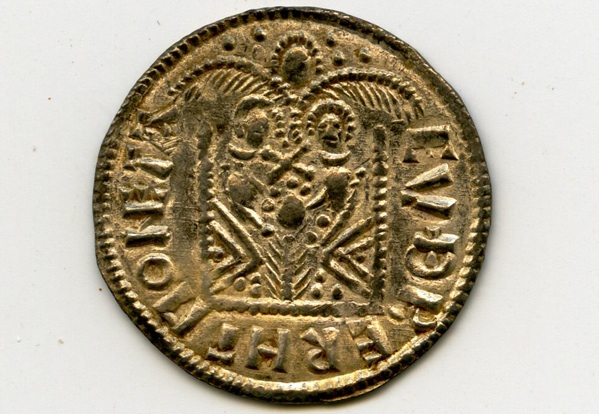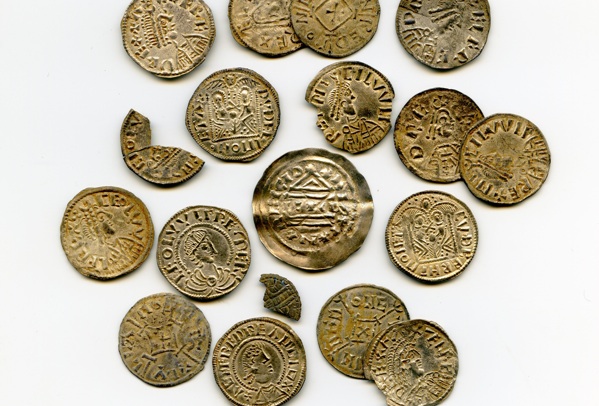
Interested in Kings? Pirates? Buried treasure?! No, it’s not Treasure Island: tell your inner five-year old to settle down. It’s King Alfred’s Coins: the latest display from Oxford’s Ashmolean Museum, and an exhibition with an urgent cause.
King Alfred’s Coins showcases the Watlington Hoard, a 9th century Viking treasure deposit unearthed last year just twenty miles from Oxford. The cache contains close to 200 coins alongside jewellery and silver bars, and may be one of the decade’s most significant discoveries for Anglo-Saxon history. The find, however, is in peril. The hoard is scheduled to enter public auction, at which point it may be split up and sold to private investors. Unless the Ashmolean Museum can raise close to £250,000 before the display’s close—31 January—this may be the last time these remarkable new discoveries are viewable to the public.
The deadline comes as a result of the 1996 Treasure Act. The ruling stipulates that all findings potentially considered treasure must be submitted to a local coroner, where they are valued and offered to local or national museums. If a given museum is unable to meet the attributed price, the finder and landowner of the treasure deposit may choose to sell the find on public auction. The Watlington Hoard was submitted to the Oxfordshire coroners in February of this year and priced at a whopping £1.35 million. The Heritage Lottery Fund granted the Ashmolean Museum £900,000 for the acquisition of the hoard, alongside additional expenses for the find’s conservation and display. With further support from private donors and the museum’s patrons, 80% of the required total has been reached. More help is still needed, however.

Two Emperor’s Coin. Photo Credit Portable Antiques Scheme.
The hoard’s astounding value derives from its immense historical significance. The find’s excavation unearthed thirteen examples of the “Two Emperors” coin - a rare penny that depicts Alfred the Great and Ceowulf II of Mercia seated side-by-side, enshrouded by the winged figure of an angel. Previous to the Watlington treasure, only two other examples of the coin were known. This latest windfall is an unprecedented discovery for British Medieval history.
The coin’s design throws doubt on previous understandings of Anglo-Saxon politics. Ceowulf, a mysterious figure in British history, was believed by many historians to have acted as a puppet king for invading Viking forces. Scandinavian raiders had pillaged British coasts since 793AD. Throughout the 9th century, their land armies conquered England’s northern and eastern kingdoms and instigated their own figurehead rulers. Ceowulf was believed to be one such individual. The “Two Emperors” coin, however, suggests the obscure king may have allied with the Anglo-Saxon Alfred against the Vikings, making his status as a political pawn unlikely.

Photo Credit: Trustees of the British Museum.
The hoard has further implications for Oxford’s history. Oxfordshire lay on the boundaries Anglo-Saxon Wessex and the Viking’s English kingdoms. Control of the county frequently exchanged hands. Dating of the Watlington treasure places its burial in the late 870s. This was a decisive period in British history. King Alfred’s defeat of King Guthrum’s ‘Great Heathen Army’ at the Battle of Edington in May 878 initiated the Anglo-Saxon’s reclamation of East Anglia and the Midlands. Early indications suggest the hoard may have been deposited by the retreating Scandinavian troops—as was common with coin hoards of that time—fleeing from the defeat at Edington. The find may, therefore, indicate toward the political control of Oxford during this contentious era.
The hoard was discovered by metal-detectorist James Mather on 7 October 2015. Initially finding a small silver bar near the ground’s surface, the Oxford local continued to dig, unearthing a series of coins. Mather commented of the discovery: “Finding such an historically significant and valuable hoard is every detectorist’s dream […] I sincerely hope the Ashmolean will be successful in acquiring this exceptional hoard and I look forward to seeing it on display for the inspiration and enjoyment of generations for years to come.” Director of the Ashmolean Xa Sturgis added: “The Waltington Hoard has a natural home here at the Ashmolean […] we now have a rare chance to acquire it - for the local community where it was discovered and for all our visitors from across the world.”
King Alfred’s Coins are on display in the Ashmolean until 31 January 2017. For more information about the exhibition and how to donate, please see online.